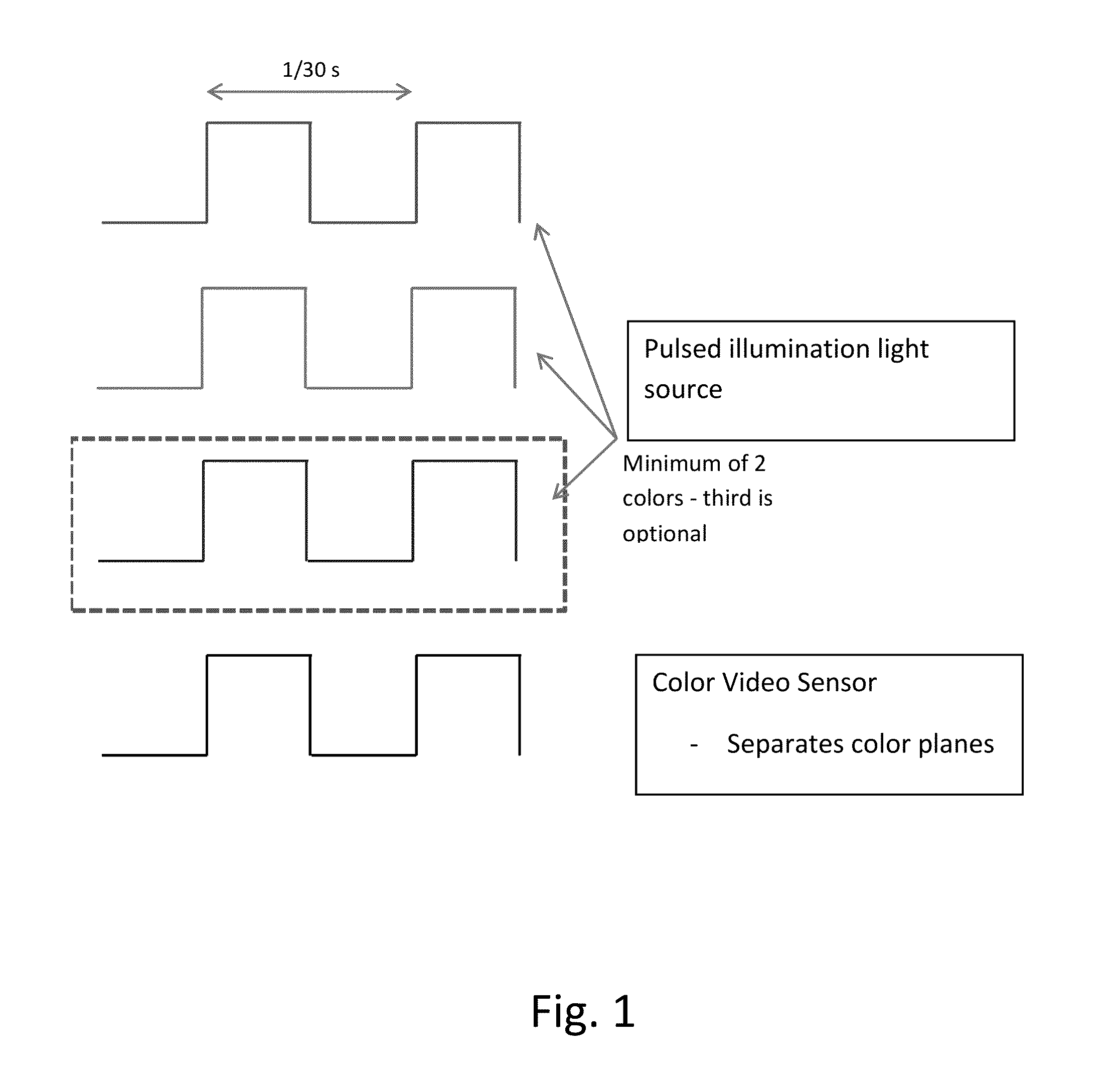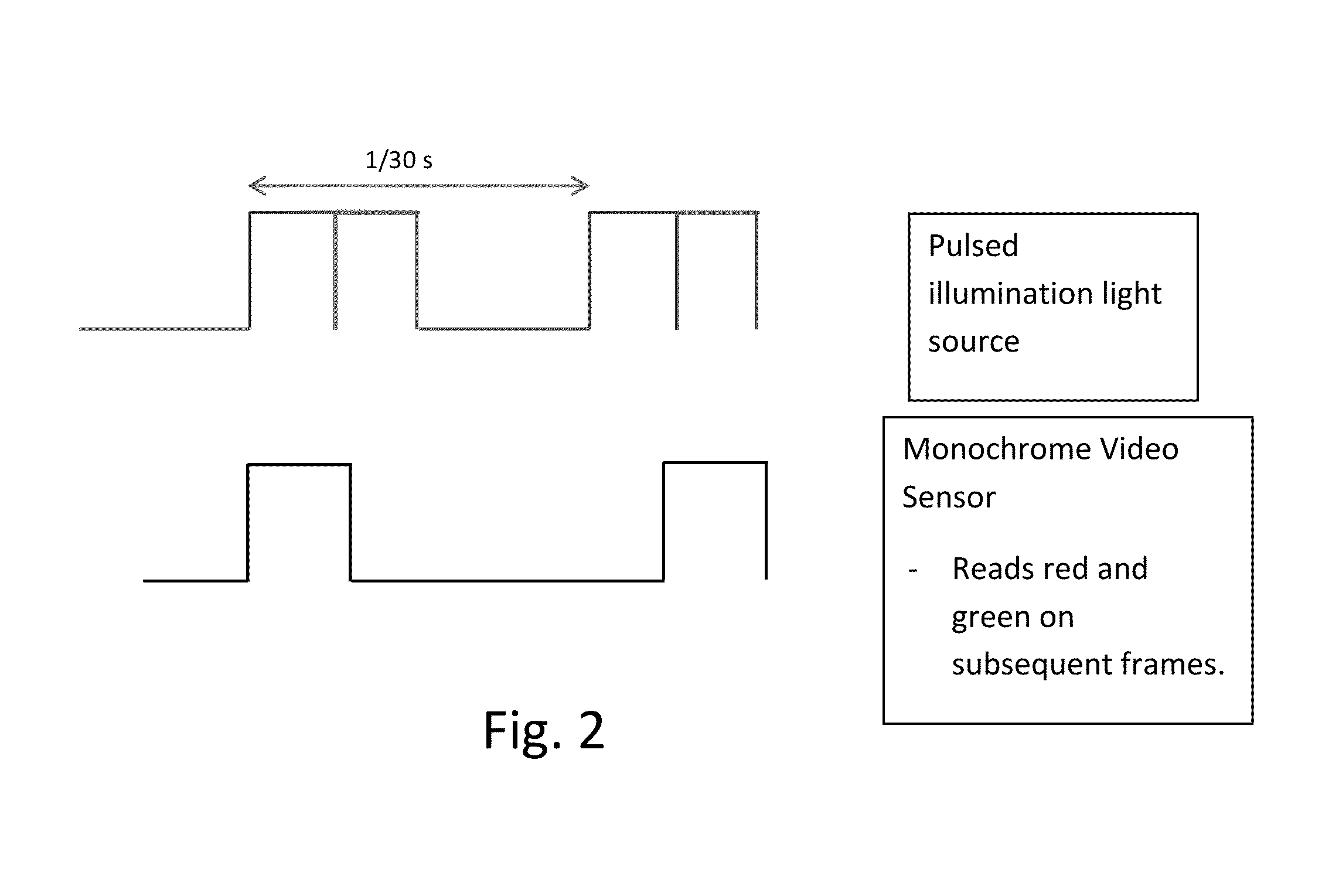Coordinated illumination and image signal capture for enhanced signal detection
a signal detection and image signal technology, applied in the field of image signal capture and processing, can solve the problems of limiting the range of colors that can be used in the printing of barcodes and be detected with the scanner, and the limited use of color to convey data signals, so as to achieve the effect of reducing the cost of the scanner
- Summary
- Abstract
- Description
- Claims
- Application Information
AI Technical Summary
Benefits of technology
Problems solved by technology
Method used
Image
Examples
Embodiment Construction
[0019]FIG. 1 is a diagram illustrating pulsed illumination and capture of image signals in a sensor to enable decoding of signals from chrominance channels. In this example, pulsed red and green colored illumination is synchronized with a video color sensor. This allows red and green color planes to be read out from the video color sensor.
[0020]When a package is moved past the capture device, it has low motion blur since a short illumination exposure time is used. The red frame and green frame are synchronized in time, so a signal encoded in chrominance can be detected by subtracting the two color planes. See U.S. Pat. No. 8,199,969, and US Patent Application Publication 20100150434, incorporated above. See also, US Patent Application Publications 20110212717 and 20130195273, and application Ser. No. 13 / 888,939 by John Lord et al., describing various arrangements for capturing images under different illumination and combining the images to enhance signal detection and recognition, i...
PUM
 Login to View More
Login to View More Abstract
Description
Claims
Application Information
 Login to View More
Login to View More - R&D
- Intellectual Property
- Life Sciences
- Materials
- Tech Scout
- Unparalleled Data Quality
- Higher Quality Content
- 60% Fewer Hallucinations
Browse by: Latest US Patents, China's latest patents, Technical Efficacy Thesaurus, Application Domain, Technology Topic, Popular Technical Reports.
© 2025 PatSnap. All rights reserved.Legal|Privacy policy|Modern Slavery Act Transparency Statement|Sitemap|About US| Contact US: help@patsnap.com



